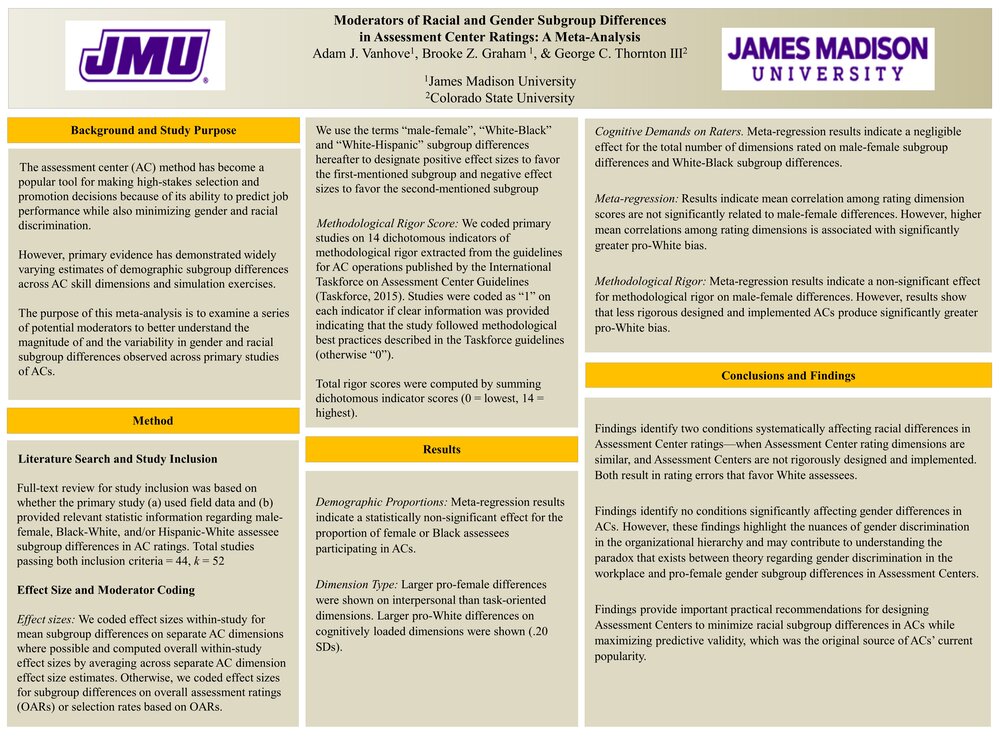Moderators of Racial and Gender Subgroup Differences in Assessment Center Ratings: A Meta-Analysis
Strategic Leadership
Advisor: Dr. Adam Vanhove
The assessment center (AC) method has become a popular tool in human resource management for making high-stakes selection and promotion decisions because of its ability to predict job performance while also minimizing gender and racial discrimination. Recent reviews highlight the variability in estimates of gender and racial subgroup differences observed across primary studies using the assessment center (AC) method. Using meta-analysis, we sought to explain this variability by testing the effects of a series of moderators using primary AC field studies. Among male-female comparison data, we examined: type of AC dimension (task-oriented versus interpersonal-oriented), the female-to-male proportion of assessees, the number of dimensions being rated, the mean correlation among dimension ratings, and the rigor of AC design and implementation. Among White-Black comparison data, we examined: type of AC dimension (cognitively loaded versus non-cognitively loaded), the Black-to-White proportion of assessees, the rigor of pre-testing procedures, the number of dimensions being rated, the mean correlation among dimension ratings, and the rigor of AC design and implementation. We found two statistically significant moderators of White-Black subgroup difference estimates: mean correlation between AC dimension ratings and methodological rigor with which ACs were designed and implemented. Both suggest that introducing greater opportunity for rating biases is associated with larger subgroup differences favoring White assessees. Findings regarding White-Black subgroup differences have important implications for designing and implementing ACs. Our findings show that the benefits of using ACs may be compromised to the extent that AC designers fail to sufficiently differentiate rating dimensions and follow methodological best practices.

